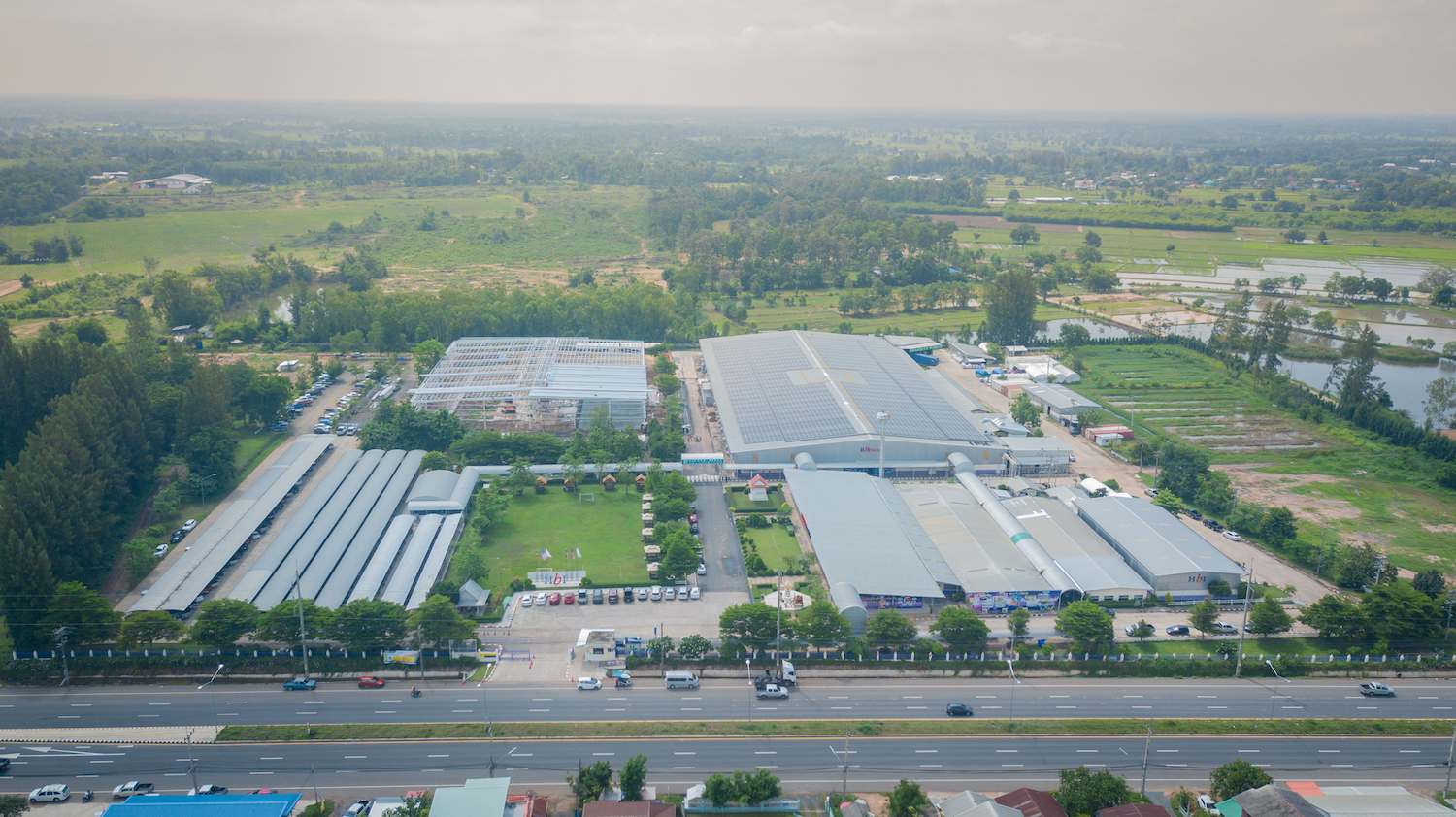
The apparel industry is well known for extensive supply chains, often with a reputation for unsustainable practices. While many apparel companies are just now making efforts to implement sustainability into their business models, HanesBrands says it has for decades been a sustainability leader in the industry. Unlike other companies in the sector, HanesBrands is in a unique position to implement extensive sustainable practices — due largely in part to a majority ownership of its supply chain.
Approximately 70 percent of HanesBrands’ total unit volume comes from facilities owned or controlled by the company directly. The breadth of this ownership means that the company has the opportunity and responsibility to implement direct and meaningful change.
Through a focus on energy and resource efficiencies and investments in biomass renewable energy to fuel textile mills in El Salvador and the Dominican Republic, HanesBrands has reduced energy usage by 33 percent and Scope 1 and 2 greenhouse gas emissions by 50 percent since 2007, with 48 percent of the company’s energy now being sourced from renewables worldwide. Water efficiency projects have resulted in a 36 percent percent reduction in water use since 2007, which in turn has fueled a further reduction in energy consumption.
These significant investments in energy and manufacturing facility infrastructure have helped to significantly move the needle on the company’s sustainability goals. The impact of HanesBrands’ majority supply chain ownership has also laid the foundation for direct and immediate impact to the business. So why did the company invest so heavily in these projects? “First and foremost, it generated really significant cost savings to the tune of hundreds of millions of dollars. Because we own these assets, we have been the direct beneficiary our invested capital dollar, said Chris Fox, HanesBrands’s chief sustainability officer.
HanesBrands’ unique supply chain ownership ensures that the company’s sustainability strategy extends beyond stakeholder engagement as a means of corporate responsibility. Direct control of these facilities means that sustainability can be integrated directly into the company’s business model and ultimately its bottom line.

While the majority of HanesBrands’ supply chain lies under its direct control, the company says the remaining 30 percent is not immune to the scrutiny of its sustainability vision. From the responsible sourcing of cotton, 61 percent of which is grown in the United States, to the preference of land and sea transportation in lieu of air as a means of reducing greenhouse gas emissions, to the company’s work with third-party groups such as the Fair Labor Association, HanesBrands says its entire supply chain is assessed through the lens of sustainability.
The final piece of HanesBrands’ supply chain — consumer use — is one where the company is proactively reaching out to consumers, primarily through active awareness-building. “Convincing the consumer to wash in cold water, for example — there is no greater impact that any of us can have on carbon emissions generated to make and care for apparel,” Fox said. “Hanes has teamed up with Tide to educate consumers about the small steps we all can take, like washing clothes in cold water. About half of the total greenhouse gas emissions generated over the life cycle of apparel comes from heating water in the laundry room.”
On a broader scale, HanesBrands understands that innovations in supply chain sustainability extend beyond the bottom line. With the advantages of its significant market share, majority supply chain ownership and affordable products, HanesBrands’ business model not only brings necessary innovations to the apparel industry, but also allows consumers to vote with their dollar and purchase affordable products that support future innovations in sustainable apparel supply chains.
“Our model is bringing sustainability to the masses. It is sustainability at a much more affordable price point,” Fox said. “Through our efforts, we want the consumer to be able to know and trust that they are buying truly sustainable products because of the breadth of our overall sustainability processes and program — and that it really can be affordable. Sustainability can be affordable for everybody.”
HanesBrands has a significant advantage in implementing sustainability within its supply chain. While most other companies in the apparel industry do not have this level of direct and immediate impact, HanesBrands’ initiatives can serve as a lesson to the sector that investment in innovation, resource efficiency, and consumer awareness are more than the bastion of corporate sustainability reports. Sustainability as value can help shape the company ethos, but utilization of sustainability as a business model ensures lasting and industry-wide change.
This article series is sponsored by HanesBrands and produced by the TriplePundit editorial team.
Images courtesy of HanesBrands

L. Blaine Fulmer is a freelance writer focused on sustainability communications, policy and stakeholder engagement.














